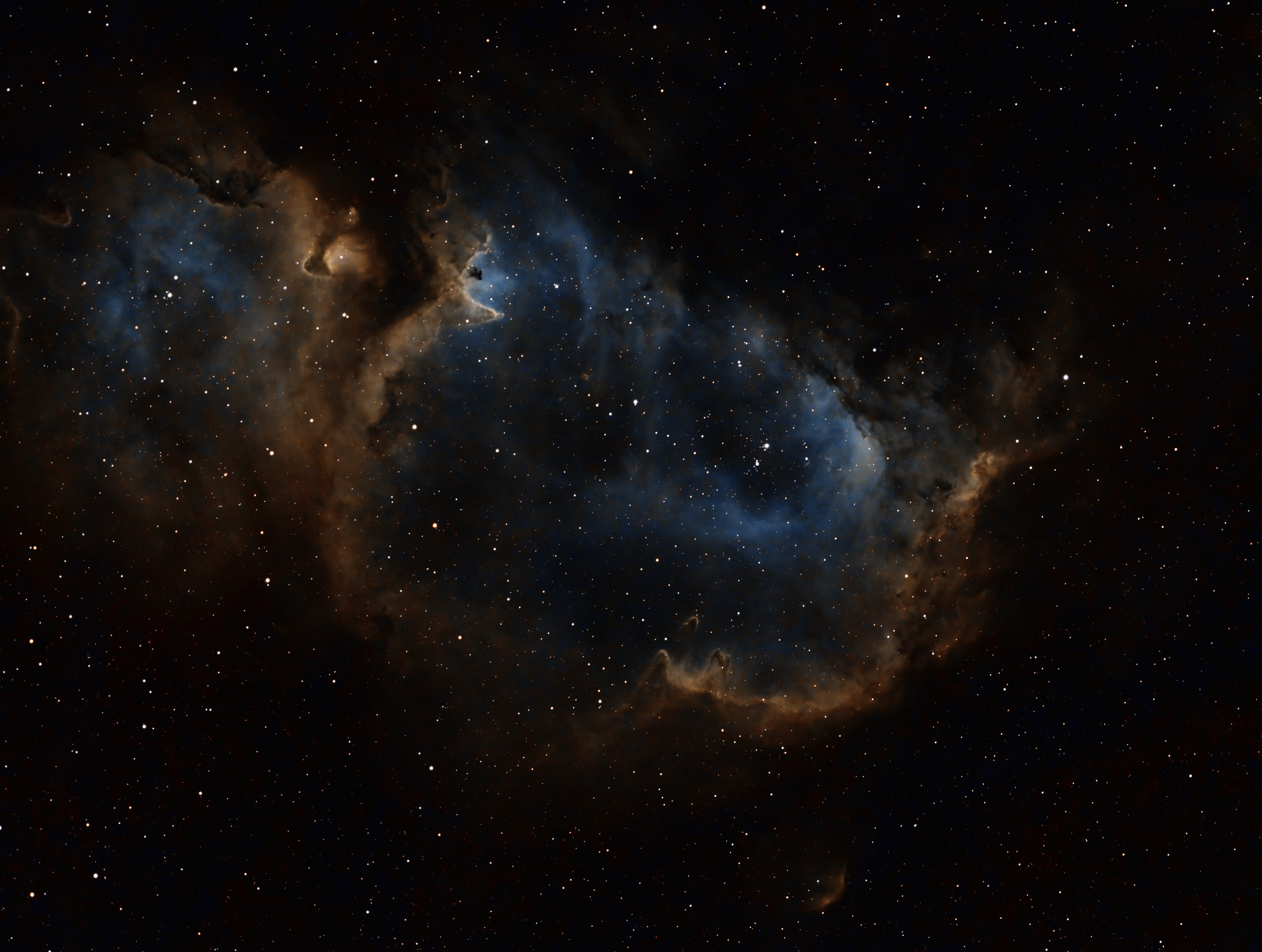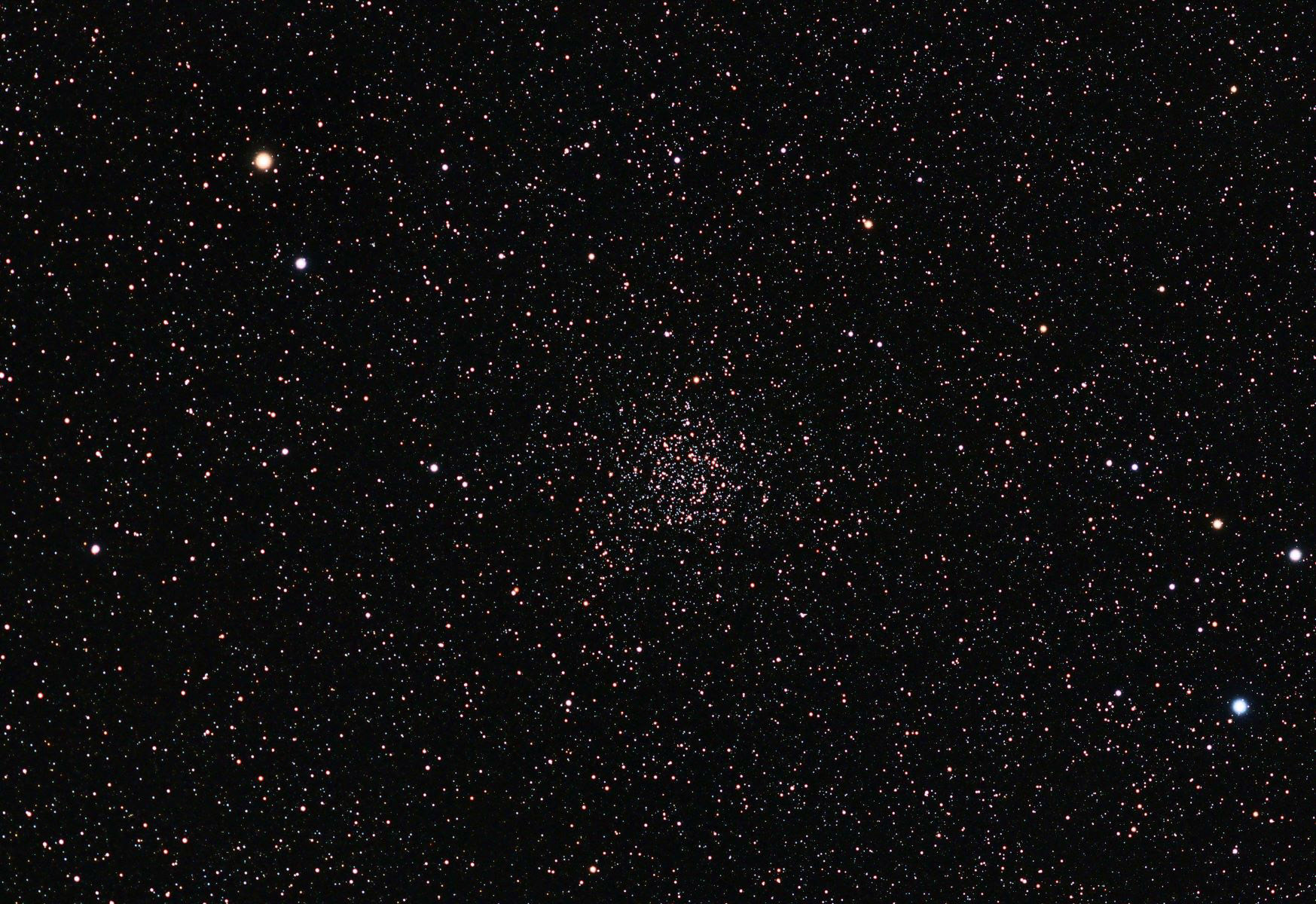
The Flaming Star Nebulae (lower), IC 405 in Auriga, lies about 1,500 light-years from Earth and is about 5 light-years across. Its companion nebulae, IC 410 is also called The Tadpole Nebulae.

The California Nebulae or NGC 1499 is an emission nebulae in Perseus. About 100 light-years long and 1,000 light-years from earth.

“The Spider and The Fly” nebulae, IC 417 abounds in star formation. Locat4ed in the constellation Auriga, IC 417 lies about 10,000 light-years away.

NGC 1491 – The Fossil Footprint Nebula. About 10,700 light years away in the Perseus arm of our Milky Way Galaxy.

Fuzzy Butterfly, Lawnmower, Yip-Yang clusters brighten the star field of the constellation Cassiopeia.

The Soul Nebula is sometimes also known as the Embryo Nebula or IC 1848. Located in Cassiopeia, it is about 6,500 light years away and about 150 light years across sharing the sky with its neighbor The Heart Nebula.

NGC 7789, Caroline's Rose in Cassiopeia. Open cluster of beautiful young stars discovered by Caroline Herschel

The Eagle Nebula, M 16 - also NGC 6611 , housing The Pillars of Creation, and also known as the Star Queen Nebula) is a young open cluster of stars in the constellation Serpens

The Cocoon Nebula, IC 5146, is an emission/reflection nebula in Cygnus. Note the dark nebula as part of the complex

The Double Cluster of Perseus: aka as NGC 869 (top) and NGC 884, both clusters are about 7,000 light-years away and contain stars much younger and hotter than the Sun

The Bubble Nebula at the right with open star cluster M52. The Bubble Nebula, also known as NGC 7635, is a mere 10 light-years wide. On the other hand, M52 is a rich open cluster of around a thousand stars. The cluster is about 25 light-years across.

The Heart Nebula is located about 7,500 light years away toward the constellation of the mythological Queen of Aethiopia (Cassiopeia).

The Heart Nebula (also known as the Running dog nebula), IC 1805 or Sharpless 2-190 seen in a different light.




















